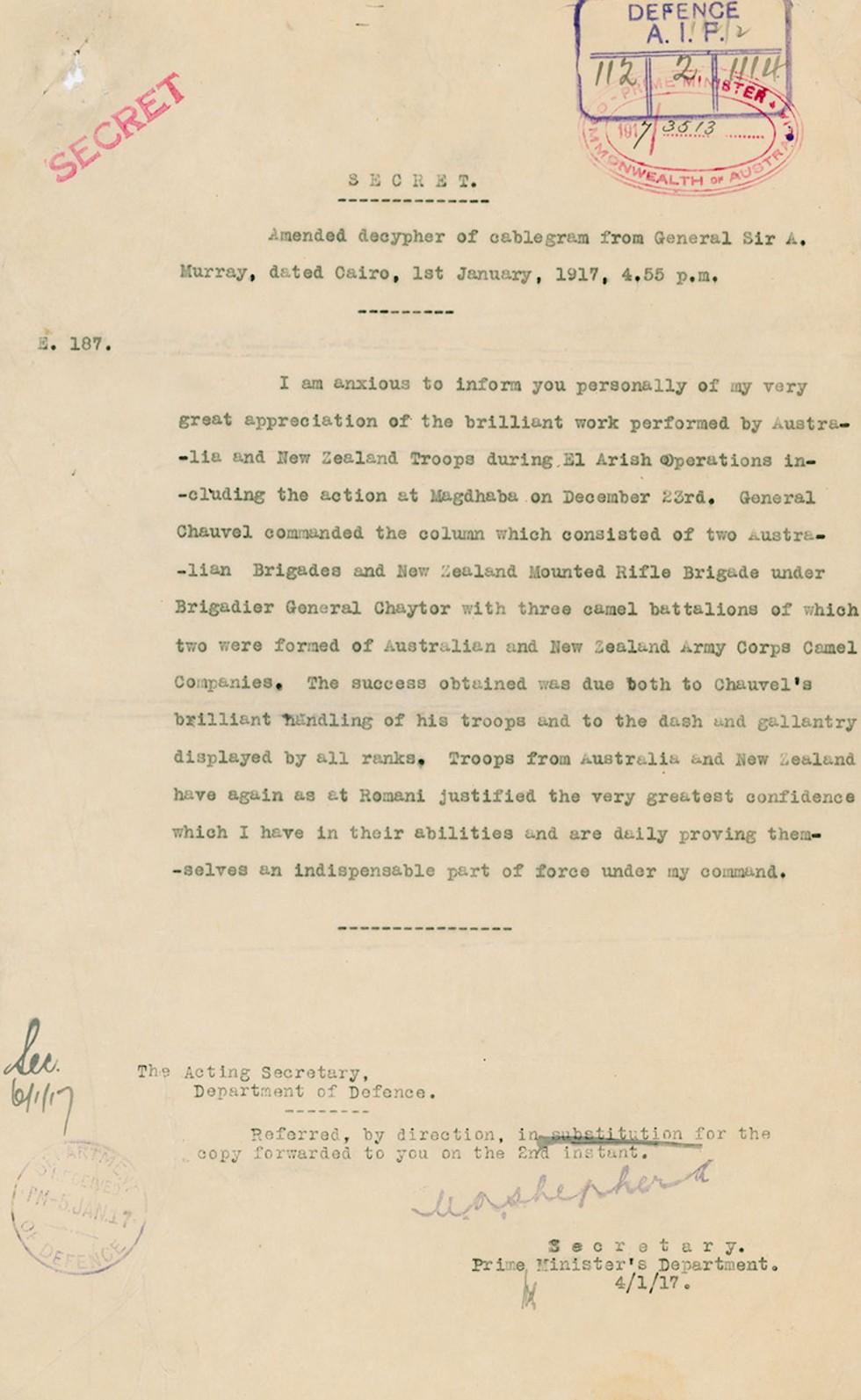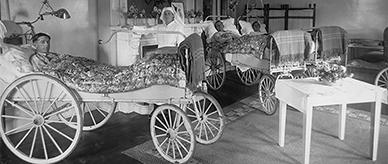


Transcript
[top left, red stamp that reads 'SECRET']
[top right, two stamps are overlapping. In blue ink, the rectangular stamp reads 'Defence A.I.F., and pencilled inside three boxes are the numbers '112', '2' and '1114'. Below this stamp, in red ink, an oval stamp reads 'PRIME MINISTER- COMMONWEALTH OF AUSTRALIA' with the number inside reading '1917/3513']
SECRET.
Amended decypher [sic] of cablegram from General Sir A. Murray, dated Cairo, 1st January, 1917, 4.55 p.m.
E. 187.
I am anxious to inform you personally of my very great appreciation of the brilliant work performed by Australian and New Zealand Troops during El Arish operations including the section at Magdhaba on December 23rd. General Chauvel commanded the column which consisted of two Australian Brigades and New Zealand Mounted Rifle Brigade under Brigadier General Chaytor with three camel battalions of which two were formed of Australia and New Zealand Army Corps Camel Companies. The success obtained was due both to Chauvel's brilliant handling of his troops and to the dash and gallantry displayed by all ranks. Troops from Australia and New Zealand have again as at Romani justified the very greatest confidence which I have in their abilities and are daily proving themselves an indispensable part of force under my command.
The Acting Secretary,
Department of Defence.
Referred, by direction, in substitution for the
copy forwarded to you on the 2nd instant.
[signature]
Secretary.
Prime Minister's Department.
4/1/17.
[Handwritten in left margin] Sec.
6/1/17 [end handwritten]
[round stamp, faded blue ink, reads 'DEPARTMENT OF DEFENCE', and inside reads 'RECEIVED PM- 5.JAN.17']
Need help with your research?
Learn how to interpret primary sources, use our collection and more.

